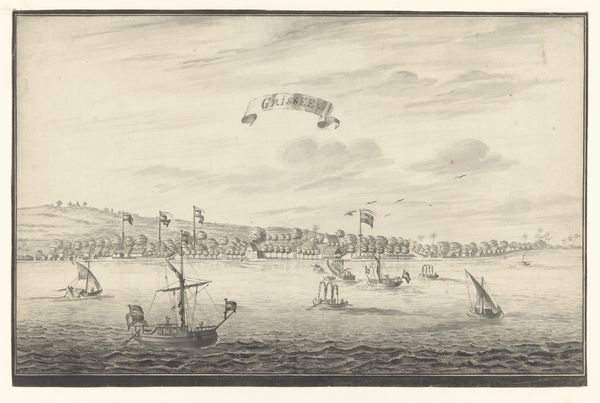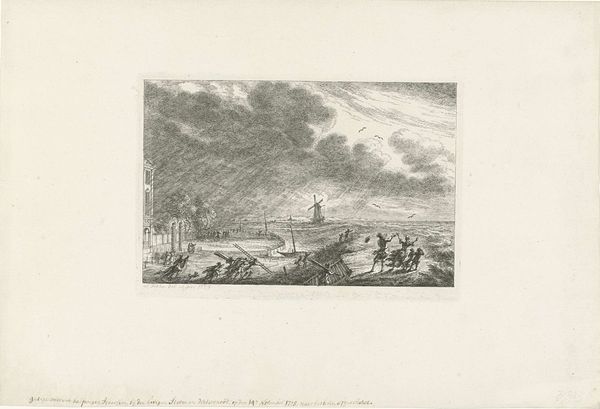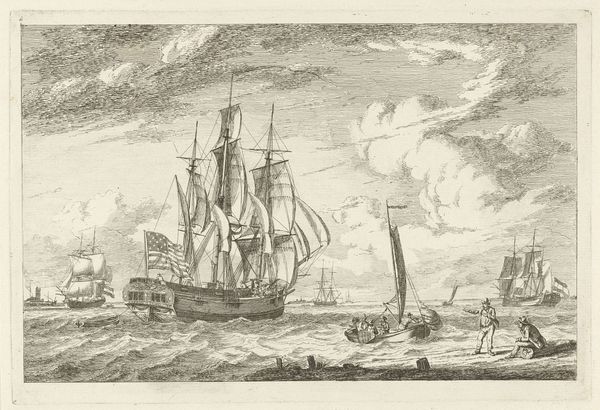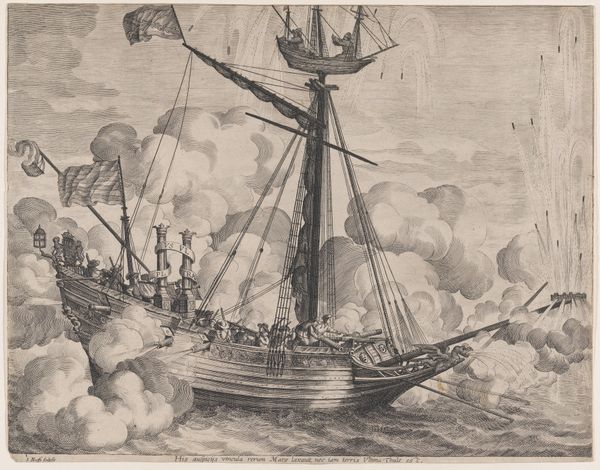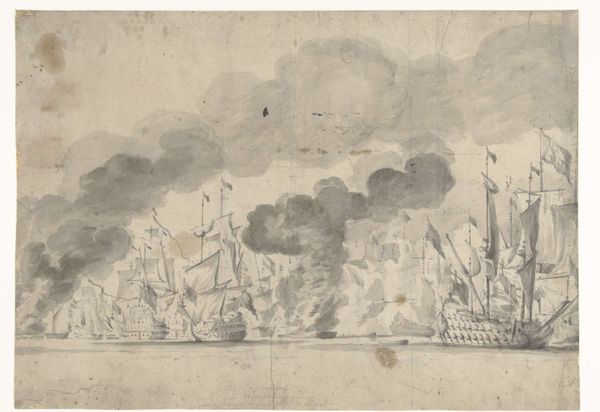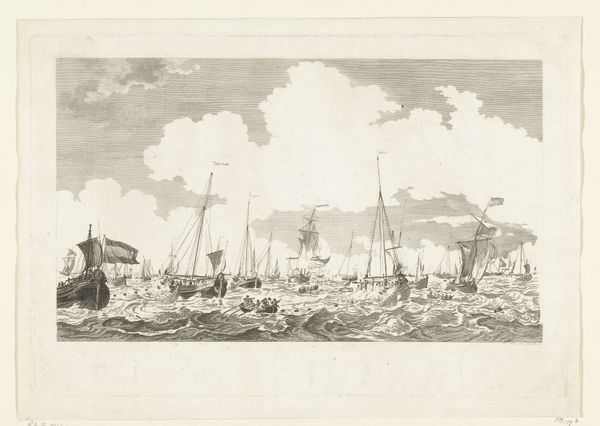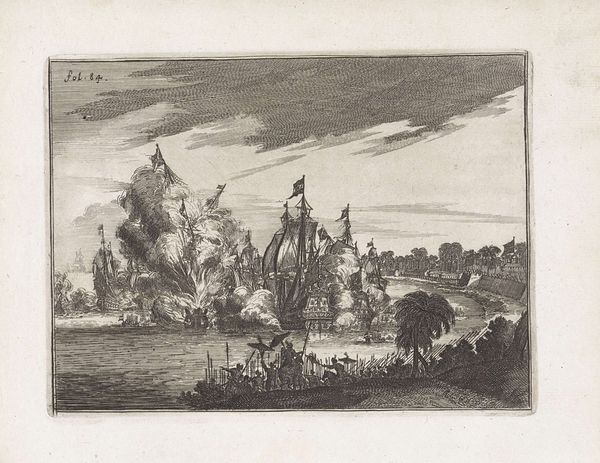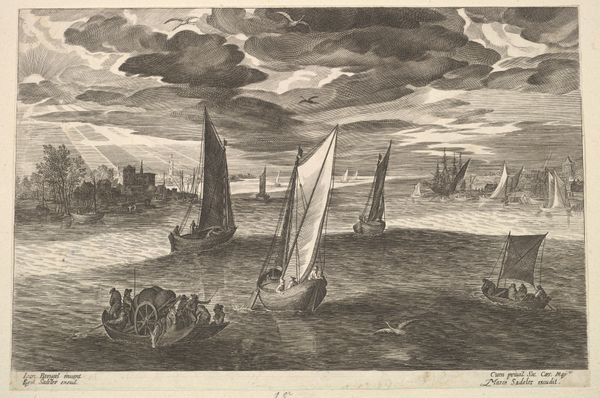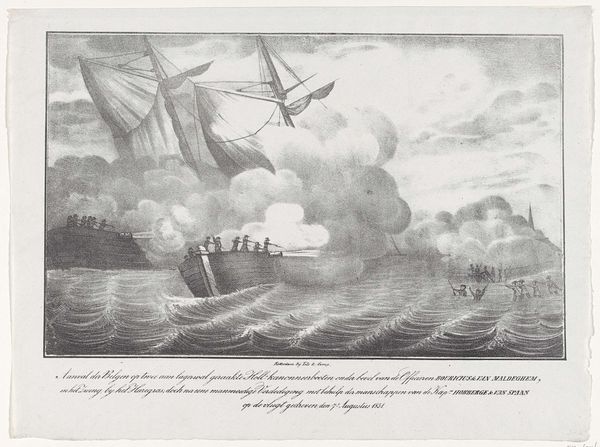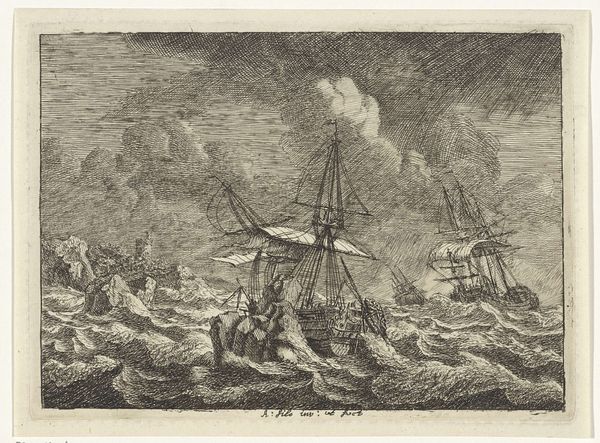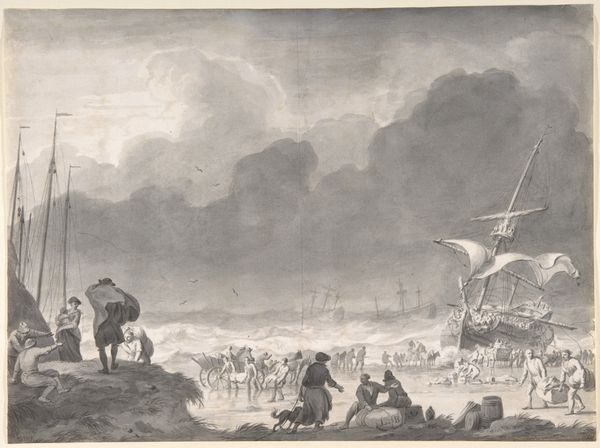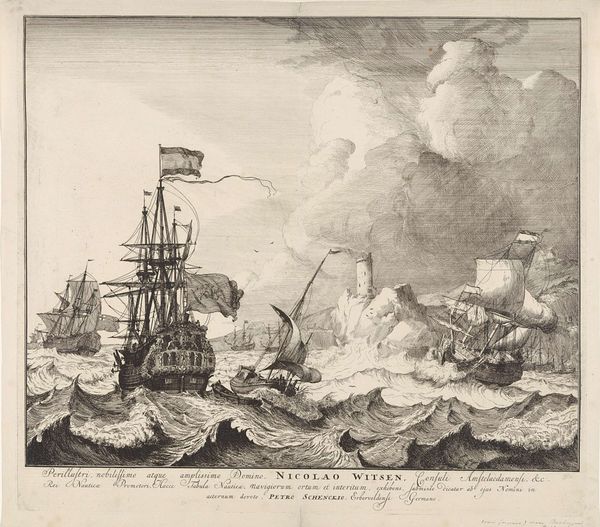
print, etching, engraving
#
pencil drawn
#
narrative-art
# print
#
etching
#
pencil sketch
#
pencil work
#
history-painting
#
academic-art
#
remaining negative space
#
engraving
#
monochrome
Dimensions: height 308 mm, width 358 mm
Copyright: Rijks Museum: Open Domain
Editor: So, this is "Bombardement van Vlissingen door de Britten, 1809" by A. Lutz, made with engraving and etching. The stark monochrome and detailed depiction of warfare are striking. What do you make of its depiction of the production of war? Curator: It's fascinating how Lutz utilizes etching and engraving – traditionally 'high art' techniques – to depict the very material process of war. Note the meticulously rendered cannons, the pyramid of cannonballs. He's laying bare the mechanics, the industrial aspects, almost, of 19th-century warfare. Editor: It’s like a cross between a history painting and an instruction manual. How does that choice of media play into the subject? Curator: Exactly. The print medium itself is crucial here. Prints were, in this period, easily reproducible, accessible. So, is Lutz using this technology to glorify the event or perhaps to make it readily available for scrutiny and debate? Think about the labor involved: the engraver meticulously recreating this scene, mirroring the meticulous labor of warfare itself. Editor: It's interesting how it democratizes a scene of destruction, then. Does this challenge or reinforce social hierarchies, depicting the production and consumption of violence in this way? Curator: It’s a potent question. The widespread availability challenges the idea of war as purely a heroic, elite pursuit. However, the academic style, which has some roots in social class, elevates it, aestheticizes it. Think about who could afford to buy this print, what their interests may have been. This image occupies a complex space between documentation, propaganda, and consumer good. Editor: This has definitely given me a lot to think about regarding the process of image-making itself. Curator: Agreed. Analyzing the materiality of war through the lens of artistic production allows for a critical understanding of its role in society.
Comments
No comments
Be the first to comment and join the conversation on the ultimate creative platform.
